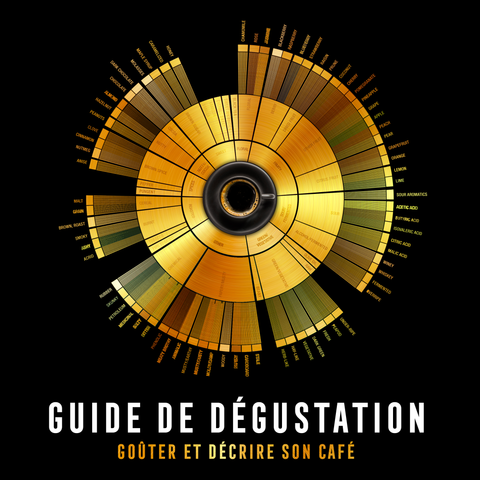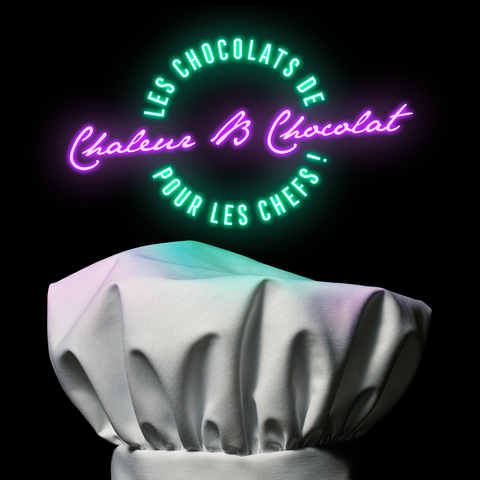
Want to describe your coffee as well as your favorite barista? Want to go further than “I like or dislike” when it comes to describing your coffee? Well, put on your coffee sommelier hat and learn to break down coffee into certain categories to help describe it as accurately as possible.
Describe a coffee by its aroma
Look for aromas, i.e. scents emanating from the roasted, ground and brewed coffee. Answer the question: "What do I smell?" » Ideally, a coffee should taste like what it smells like.
Describe a coffee by its acidity
We are talking here about taste and sensory perception. Lemon is often the reference to represent the sensation of spicy acidity. How do you perceive this feeling? Bright, spicy, lively, nervous, sharp, soft, fresh, soft, absent. (In order from most acidic to least, that's the term I use) Refer to lemon. If it's not clear enough, grab one and bite into it.
Based on flavor (fragrance + taste)
The term “flavor” refers to the mixture of olfactory and taste perceptions. I like to use the word flavor since it is impossible to separate taste from perfume. However, it is possible to smell without tasting, but one cannot taste without feeling. At least, I don't know how since once a food is in the mouth, its scent travels up our palate to the nasal cavity. It is this sensation that allows for the most poetry since we have both senses of stimulated.
Ask yourself: “What does it taste like?” » Swirl the coffee in your mouth (without burning yourself please) See the image: the flavor wheel below. The “taste” side corresponds to the sensations of the tongue, the other “aroma” side corresponds to the scent felt by the “nose ” .
In the color spectrum on the “aromatic” side, we can quickly classify the coffee with the level of roasting: Lightly roasted (enzymatic), mid-dark medium (sugar browning), fuller-bodied French city+ (dry distillation). You will not perceive an apricot flavor in a very dark Italian roast, since apricot is not in the “dry distillation” spectrum. I suggest you print out the flavor wheel and refer to it. Here, the roasting level is very important since it will have an impact on the outcome of the cup.
Taste and describe the body of your coffee
It is the perception of the texture, of the viscosity of the coffee in the mouth. This sensation comes from oils, sediments dissolved in water: in short, a very physical perception of the liquid.
How do you perceive the liquid in your mouth? When you swirl the liquid in your mouth, when you rub your tongue against the roof of your mouth, is it: heavy, syrupy, oily, enveloping, syrupy, thin, light, vaporous.
Experience will allow you to determine if one coffee has more body than another. If you want to compare two extremes, take two pistons (36g of coarse ground coffee for 500g of water, 6 minutes of infusion) one from Guatemala Antigua and one Sumatra Mandheling. Pour into two cups and taste them alternately. You will see the difference.
Determine the aftertaste of the coffee (fine, finishing, last touch)
It is the perception of flavors (scents and tastes) after swallowing or spitting out the coffee. Personally, I find it easier after swallowing it. Simply exhale through your nose after a sip to feel this impression in your mouth and nose.
Do the flavors you noticed remain or disappear quickly? Here, we are talking about the duration of this impression, time and experience will give you references on the finish of a coffee. Finished short, long, medium, do all the flavors disappear or do some remain? Which ones remain? Example, a coffee that has flavors of vanilla, dark chocolate, plum and grape, and which, when swallowed, only the vanilla remains, leaving a long vanilla finish on the nose.
This covers roasted coffee quite a bit, you can also describe, beforehand, the details on:
- The origin of the coffee or the components of the blend: Country, region, farm, altitude, varieties of Arabica grown. Example: Rwanda, Lake Kivu, Coopac, Bourbon AA.
- The process of transforming the fruit into the bean and transporting green coffee: Washed or natural in the case of the fruit. In terms of transport, we are seeing more and more producers packaging green coffee in special bags (grainpro) or vacuum-packed in order to keep the freshness of the beans. This makes a difference compared to transport in traditional jute bags.
- Roasting level: Note here that the level of light to medium-dark roasting (city) is most appropriate for tasting and expressing the terroir of the grain, because the flavors perceived when tasting are directly linked to the terroir , climate, elevation, etc. After the 2nd crack, when the grain is dark brown to black and oily, the sugars are then carbonized and/or destroyed. On the flavor wheel we can perceive the type of aromas felt at this level. I consider deeper roasts to be conducive to a coffee experience, prepared in espresso, or to the customers' search for a particular taste (smoked, pepper, tobacco, burnt wood). Extensive roasting hardly expresses the terroir flavors of the grain. Opinion: it is important here (from experience…) not to appear elitist in the description by emphasizing lighter roasted coffees. Be patient and respect your neighbor's taste. ;-)
Here is the order in which I describe a coffee:
- Origin of the coffee and or composition of the mixture
- Fruit processing process and transport of green coffee
- Roasting level
- Scent.
- Acidity
- Flavor
- Body
- Finishing
An example :
- Rwanda, Lake Kivu, Coopac, Bourbon AA
- Washed, stored in sealed grainpro bags
- Light roast
- Fragrance of jasmine, flower and strawberry
- Light and pleasant acidity, gentle tingling
- Strawberry jam, honey and strawberry, lemon
- Vinous, quite thin but a nice presence on the palate
- Sweet strawberry finish
This is how I describe the Rwanda Bourbon AA that we had in stock. it was excellent coffee! There is a peak in flavors around 48 hours after roasting (sealed in a bag immediately after roasting, therefore resting for 48 hours in an airtight bag) especially in the strawberry finish.
For those who are interested, when I have finished setting up my lab, there will be a tasting session open to every Friday afternoon. I wanted to do it in cafes but the places are not suitable for tasting. It takes a minimum of tranquility. You will therefore be able to participate in the development of blends, the choice of roasting levels, etc. This will allow me to raise awareness of our product and share passion and knowledge. I will officially announce when I am ready.
Coffee is a noble and delicious product that deserves to be better known and appreciated.
Good tasting !!!
Dany





Comments (2)
Bonjour,
Très très intéressant.
Je suis justement en train de boire un café (Honduras) dans un Conservatoire du Café, à Issy et trouve qu’il envahit la bouche d’une manière acide et désagréable, en fait, quelle déception.
Évidemment, je le bois sans sucre et n’est pas voulu en mettre après la première gorgée.
Voilà mon impression.
Portez-vous bien.
Pascal RENAULT
La leçon est vraiment interessante pour mieux apprendre Sur le Café